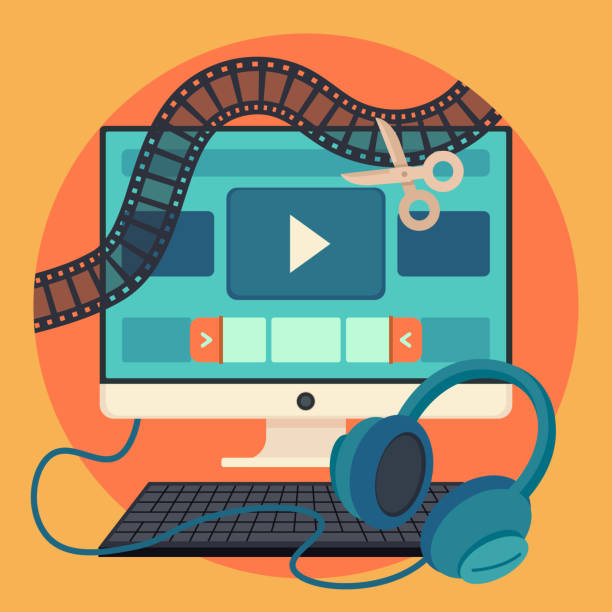How to get the most out of modern gatherings with audio visual charlotte nc
Comprehending the Incorporation of Audio Visual Modern technology in Today's Educational Environments
The combination of audio-visual modern technology in educational setups has changed the training and finding out process. Educators currently have accessibility to devices that cater to different finding out styles, enhancing pupil involvement and collaboration. The incorporation of these modern technologies presents both chances and obstacles. Comprehending how to efficiently carry out these devices is essential. What techniques can instructors use to take full advantage of the advantages of audio-visual modern technology in their class?
The Evolution of Audio-Visual Innovation in Education
As educational needs developed over the years, audio-visual innovation undertook substantial transformations that improved the learning setting. At first, devices such as film projectors and slide programs were the primary ways of integrating aesthetic aspects right into classrooms. These early modern technologies supplied teachers with the capability to present info dynamically, yet they were limited in ease of access and interactivity.
With the development of videotape recorder in the 1970s, classrooms began to incorporate recorded lessons, broadening the extent of academic resources. The intro of computers in the 1980s more reinvented this landscape, allowing for the creation of multimedia discussions and interactive discovering experiences.
The increase of the web in the 1990s noted a turning point, allowing real-time accessibility to a wealth of audio-visual materials. Today, digital devices such as interactive white boards and on the internet knowing platforms continue to boost the academic experience, fostering engagement and collaboration amongst students.
Benefits of Audio-Visual Tools for Diverse Discovering Styles
Audio-visual devices play an important role in satisfying varied discovering styles by boosting visual understanding and enhancing auditory engagement. By integrating photos, videos, and audio, these technologies develop an even more comprehensive instructional environment. This diverse technique permits educators to address the different choices and requirements of students properly.
Enhancing Visual Knowing
Involvement in the learning procedure is considerably improved via the usage of audio-visual devices, accommodating numerous learning styles. These tools, such as video clips, infographics, and interactive discussions, give aesthetic stimulations that aid comprehension and retention. Aesthetic students, particularly, gain from the unification of images and computer animations, which can simplify complex principles and enhance understanding. Furthermore, audio-visual resources can highlight real-world applications, making discovering more appropriate and appealing. By integrating shade, movement, and sound, instructors can create a vibrant knowing environment that catches trainees' attention and cultivates deeper cognitive connections. Eventually, the strategic use of audio-visual modern technology not only sustains aesthetic learning however additionally enriches the general instructional experience for varied students.
Improving Auditory Involvement
A significant benefit of integrating audio-visual devices in education is their capability to improve acoustic involvement among trainees. These tools, which incorporate multimedia presentations, podcasts, and interactive sound elements, cater to different discovering designs, especially benefiting acoustic students (audio visual charlotte nc). By incorporating noise and narrative, teachers can produce immersive experiences that catch trainees' interest and enhance understanding. This involvement is essential, as it cultivates a much deeper understanding of the product and promotes retention. Furthermore, audio-visual tools can promote collaborative learning atmospheres, encouraging pupils to take part in discussions and share their insights. Eventually, the consolidation of audio-visual innovation not just sustains auditory involvement however additionally enhances the total instructional experience, making discovering more vibrant and efficient for all pupils
Enhancing Engagement Through Interactive Understanding

In addition, gamification aspects, such as quizzes and simulations, can improve inspiration and retention, making finding out more satisfying and reliable. These techniques not only promote cognitive involvement but also provide to diverse discovering styles, guaranteeing that all students can participate meaningfully. Therefore, interactive knowing atmospheres foster a feeling of area and belonging, ultimately causing boosted scholastic end results. Through the integration of audio aesthetic technology, instructors can change conventional classrooms into vibrant spaces where pupils prosper and proactively form their educational journeys.
Linking Theory and Technique With Multimedia Resources
Multimedia sources work as a vital link between theoretical principles and useful application in academic settings. By boosting engagement, helping with collective understanding experiences, and supporting diverse discovering designs, these devices develop a much more inclusive and vibrant discovering atmosphere - audio visual charlotte nc. This strategy not only fosters deeper understanding yet also prepares trainees for real-world challenges

Enhancing Interaction With Multimedia
Engagement in instructional settings substantially boosts when trainers include multimedia sources into their teaching strategies. Using videos, podcasts, and interactive presentations enhances the learning experience, enabling pupils to get in touch with the product on multiple levels. Multimedia resources satisfy different finding out designs, offering visual, auditory, and kinesthetic stimuli that can hold students' focus better than standard lecture techniques. In addition, these sources can simplify complicated principles, making them much more obtainable and memorable. By incorporating multimedia, educators can develop a dynamic classroom setting that cultivates curiosity and encourages learners. Inevitably, the tactical use of audio-visual modern technology serves to connect the space in between theoretical expertise and functional application, improving the academic experience for both instructors and trainees.
Facilitating Collaborative Understanding Knowledge
Countless studies show that collaborative learning experiences markedly improve student end results when integrated with multimedia sources. Multimedia tools facilitate communication amongst trainees, permitting them to engage in problem-solving and critical believing collectively. By using video conferencing, joint systems, and interactive presentations, educators produce environments for team effort and shared learning. These modern technologies allow trainees to interact their concepts efficiently and receive instant responses, promoting a deeper understanding of the subject. In enhancement, multimedia resources can offer intricate principles in even more absorbable styles, advertising discussion and cooperation. Consequently, the mix of collaborative discovering and audio-visual technology not just improves the instructional experience yet likewise prepares students for real-world team effort characteristics, emphasizing the value of teamwork and cumulative understanding construction.
Supporting Diverse Knowing Styles
While traditional teaching methods often provide to a restricted range of finding out preferences, the assimilation of audio-visual modern technology provides a more inclusive approach to education and learning. By employing multimedia resources such as video clips, interactive simulations, and electronic presentations, educators can deal with numerous discovering designs, including visual, acoustic, and kinesthetic. This flexibility permits separated instruction, enabling trainees to involve with web content in manner ins which reverberate with their specific choices. In addition, audio-visual tools can assist in deeper understanding by supplying numerous representations of intricate principles. As an outcome, trainees that may battle with conventional techniques can discover alternate pathways to success, cultivating an extra equitable understanding atmosphere that sustains scholastic accomplishment for all learners.
Challenges in Carrying Out Audio-Visual Modern Technology
Although audio-visual modern technology holds excellent guarantee for boosting educational experiences, its implementation commonly encounters considerable challenges. One key problem is the economic worry related to getting and keeping such tools, which can strain budgets, particularly in underfunded institutions. In addition, inadequate training for educators can prevent efficient combination, leaving them ill-prepared to use the technology fully. Technical concerns, such as software malfunctions and compatibility issues, may also interfere with lessons and frustrate both teachers and students. Differing degrees of student accessibility to modern technology outside the class can produce differences in finding out possibilities. The possibility for over-reliance on innovation may detract from essential mentor approaches, inevitably limiting the instructional experience. Dealing with these difficulties requires a complete approach, consisting of sufficient financing, expert development, and equitable accessibility to sources, to assure that audio-visual innovation can be leveraged successfully in today's academic setups.
Ideal Practices for Integrating Innovation in the Classroom

Furthermore, cultivating an interactive setting via collective devices motivates pupil interaction and involvement. Making use of varied audio-visual resources satisfies different learning styles, fitting visual, auditory, and kinesthetic students. Frequently reviewing the impact of innovation on student discovering assists educators improve their strategies and adjust to changing demands. Ultimately, entailing trainees in the selection of technology promotes ownership and motivation. By adhering to these best practices, educators can produce a vibrant class environment that effectively integrates technology and enhances the instructional experience for all pupils.
The Future of Audio-Visual Innovation in Education
As classrooms increasingly embrace technology, the landscape of audio-visual tools in education and learning proceeds to develop (audio visual charlotte nc). Future innovations are anticipated to concentrate on better interactivity and customization, permitting instructors to tailor finding out experiences to individual trainee requirements. Innovations such as enhanced reality (AR) and virtual fact (VIRTUAL REALITY) will likely offer immersive understanding environments, boosting student involvement and understanding
Synthetic intelligence (AI) is positioned to play a considerable duty in audio-visual modern technology by supplying real-time feedback and flexible knowing pathways. This combination may help teachers recognize and resolve pupil challenges better. Cloud-based systems will assist in less complicated accessibility to resources and partnership among trainees and teachers, no matter area.
Along with these technical breakthroughs, professional development for teachers will certainly be crucial, ensuring they are outfitted to make use of these devices efficiently. In general, the future of audio-visual modern technology in education promises to develop more dynamic, inclusive, and impactful discovering experiences.
Frequently Asked Questions
Exactly How Can Educators Choose the Right Audio-Visual Tools for Their Classrooms?
Picking suitable audio-visual tools calls for instructors to evaluate their academic goals, take into consideration student requirements, examine available technology, and look for referrals from peers or experts, making sure tools properly improve learning and interaction within their particular class setting.
What Spending plan Considerations Are There for Carrying Out Audio-Visual Technology?
Budget plan factors to consider for applying audio-visual innovation include initial acquisition costs, maintenance expenditures, training for personnel, and possible software application licensing costs. Furthermore, lasting financial investment in updates and substitutes should likewise be factored right into financial preparation.
Exist Certain Training Resources for Educators on Audio-Visual Devices?
Numerous organizations offer training sources for teachers on audio-visual devices, consisting of on-line training courses, workshops, and training overviews. These sources aim to enhance educators' abilities and confidence in successfully integrating modern technology into their mentor practices.
How Do We Measure the Performance of Audio-Visual Technology in Learning?
Determining the efficiency of audio-visual modern technology in learning involves examining trainee involvement, comprehension, retention rates, and total academic performance. Surveys, evaluations, and empirical research studies can supply useful insights into its influence on instructional outcomes.
What Prevail Misunderstandings Concerning Audio-Visual Innovation in Education And Learning?
Common misunderstandings concerning audio-visual technology in education and learning include the belief that it ensures involvement and learning outcomes, as well as the presumption that all students benefit just as, ignoring private understanding preferences and needs.